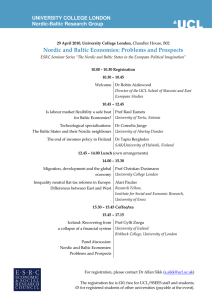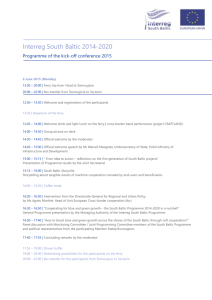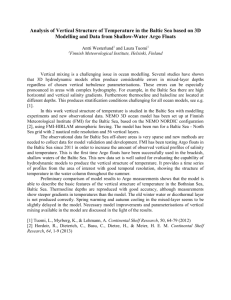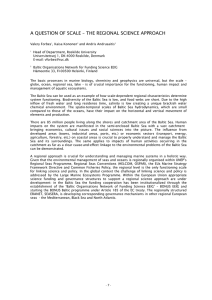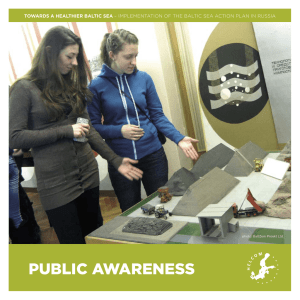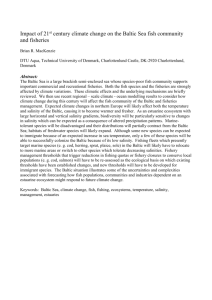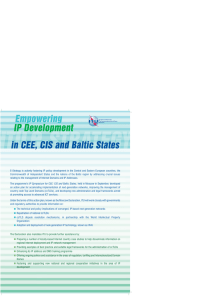Molecular traces of the diversity and history of Baltic fauna
advertisement
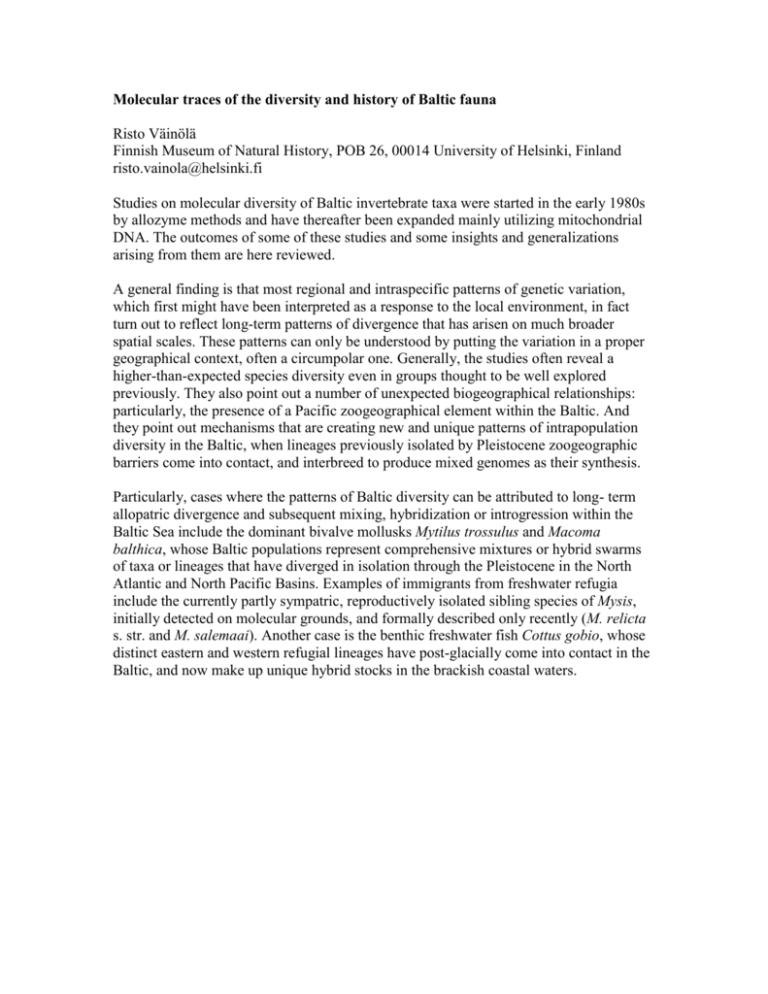
Molecular traces of the diversity and history of Baltic fauna Risto Väinölä Finnish Museum of Natural History, POB 26, 00014 University of Helsinki, Finland risto.vainola@helsinki.fi Studies on molecular diversity of Baltic invertebrate taxa were started in the early 1980s by allozyme methods and have thereafter been expanded mainly utilizing mitochondrial DNA. The outcomes of some of these studies and some insights and generalizations arising from them are here reviewed. A general finding is that most regional and intraspecific patterns of genetic variation, which first might have been interpreted as a response to the local environment, in fact turn out to reflect long-term patterns of divergence that has arisen on much broader spatial scales. These patterns can only be understood by putting the variation in a proper geographical context, often a circumpolar one. Generally, the studies often reveal a higher-than-expected species diversity even in groups thought to be well explored previously. They also point out a number of unexpected biogeographical relationships: particularly, the presence of a Pacific zoogeographical element within the Baltic. And they point out mechanisms that are creating new and unique patterns of intrapopulation diversity in the Baltic, when lineages previously isolated by Pleistocene zoogeographic barriers come into contact, and interbreed to produce mixed genomes as their synthesis. Particularly, cases where the patterns of Baltic diversity can be attributed to long- term allopatric divergence and subsequent mixing, hybridization or introgression within the Baltic Sea include the dominant bivalve mollusks Mytilus trossulus and Macoma balthica, whose Baltic populations represent comprehensive mixtures or hybrid swarms of taxa or lineages that have diverged in isolation through the Pleistocene in the North Atlantic and North Pacific Basins. Examples of immigrants from freshwater refugia include the currently partly sympatric, reproductively isolated sibling species of Mysis, initially detected on molecular grounds, and formally described only recently (M. relicta s. str. and M. salemaai). Another case is the benthic freshwater fish Cottus gobio, whose distinct eastern and western refugial lineages have post-glacially come into contact in the Baltic, and now make up unique hybrid stocks in the brackish coastal waters.
